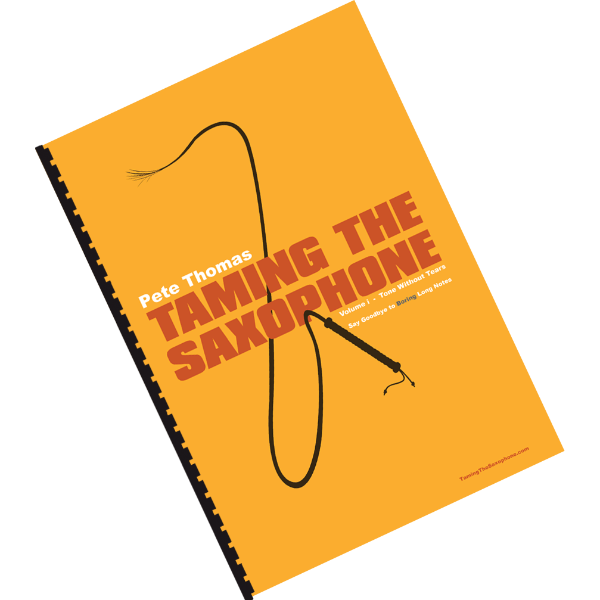Video: getting it wrong then getting it right!
Why combine tone & fingering exercises?
I have found this to be very useful, but it may not work for everyone. So the best thing to do may be to try and and see if it does help you.
Some people find that pure tone exercises can quickly become boring, and as soon as this happens your mind wanders, and so whatever gain you would get from focussed practice is diminished. OTOH, some people (who are good at focussing or concentrating on something like tone or long note exercises) may find introducing this other element becomes distracting in itself. In other words you start focussing on the fingering and forget about the tone.
So what you need to do is find a good balance of different things to keep your mind from wandering or losing focus. So I would do all of the following:
- some pure tone control exercises
- some fingering
- some exercises that combine the two. After all, in a performance you may well be combining fingering (tunes/improvisation) and dynamics.
As you may have discovered, some of my tone exercises would involve increasing and decreasing the volume on a single long note – this is just one way to make your sound more expressive.

But adding crescendo and decrescendo to melodic passages is a very different skill – so as well throughout a long note (as above) you need to be able to adjust dynamics during fingered passages

This can be extremely difficult for a couple of reasons:
- You need to crescendo or decrescendo smoothly, without suddenly getting louder or quieter
- You need to be able to gauge the rate at which you crescendo or decrescendo. If you get to your maximum loudness or quietness before the end there is nowhere further to go. (As you can hear in one of my videos below where I got too loud before the end of the exercise. Obviously this was a deliberate mistake!
- You need to keep an ear out for tuning discrepancies. We sometimes find that playing very loud can cause the notes to be flat (overblowing). So you need to understand your both your own and your equipment’s restrictions in this regard – and if necessary work on extending your dynamic range without affecting pitch. This is something that you may find easier to gauge when working on dynamics with a single long note.
Which are the best exercises to combine?
There is hardly any limit. Most of the dynamics, pitch, articulation, vibrato and even overtone exercises from Taming The Saxophone Vol 1 can be combined with most of the fingering exercises in Taming The Saxophone vol 3.
Try different tempos – there is no specific need to worry about doing this at breakneck tempos. Start slowly and evenly. If you need to talk breath then take a breath. Evenness of tempo, smoothness of dynamic change and accuracy of articulation are the key factors in this.
